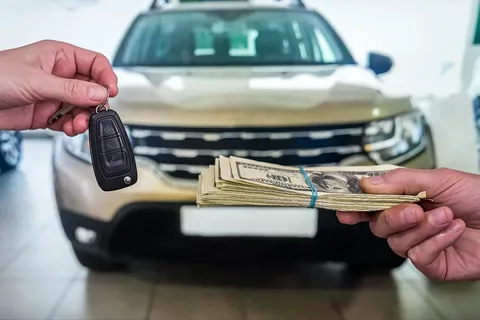Subtotal $0.00
Maintaining a car’s engine health is essential for optimal performance, longevity, and safety on the road. Two critical areas in car repair that drivers may encounter are timing chain replacement and general car repair. This guide explores the details of timing chain replacement, including signs it’s needed, costs, and procedures, as well as other key aspects of car repair, so drivers can make informed decisions about vehicle maintenance.
1. Timing Chain Replacement
A timing chain, integral to an engine’s functionality, synchronizes the crankshaft and camshaft, ensuring that the engine’s valves open and close at the right times during each cylinder’s intake and exhaust strokes. Timing chains are generally durable, but like any component, they can wear out or become damaged, necessitating replacement.
When to Replace the Timing Chain
Most timing chains are designed to last the lifetime of the vehicle, often exceeding 100,000 miles. However, in some cases, it may need replacement due to the following:
- High Mileage Wear: After many miles, the timing chain may begin to stretch, affecting engine timing.
- Poor Maintenance: Inadequate oil changes can accelerate timing chain wear since the chain relies on proper lubrication.
- Loud Rattling Noise: A rattling noise coming from the engine could indicate a loose timing chain.
- Engine Misfire: A worn timing chain can cause misfires due to inaccurate engine timing.
- Difficulty Starting: If the engine struggles to start or doesn’t start at all, it may be a sign of timing chain issues.
Steps in Timing Chain Replacement
Replacing a timing chain is a complex procedure that requires technical expertise. Here is an overview of the general process:
- Preparation and Safety: Disconnect the battery and remove any parts blocking access to the timing chain, including engine covers and ancillary belts.
- Drain Engine Oil: The oil should be drained to prevent any contamination during the replacement.
- Accessing the Timing Chain: The mechanic removes the timing cover, and sometimes even the water pump or other components, to reach the chain.
- Removing the Old Chain: Once exposed, the old timing chain is carefully removed along with associated gears and tensioners.
- Installing the New Chain: A new chain, gears, and tensioner are installed and aligned correctly to ensure accurate engine timing.
- Reassembly and Testing: The timing cover and all removed components are reinstalled, and the engine is tested to ensure proper functionality.
Cost of Timing Chain Replacement
The cost of replacing a timing chain varies based on the make and model of the car and labor rates in different regions. On average, timing chain replacement costs between $600 and $1,500, with labor making up the majority of the expense. Luxury or high-performance cars may see higher costs due to more complex engines.
2. General Car Repair: Key Areas and Maintenance Tips
While timing chain replacement is a specific, often costly repair, regular maintenance and addressing minor issues early can help avoid such expenses. Below are essential areas of car repair, along with tips for maintaining vehicle health.
a. Routine Maintenance
Routine maintenance is the cornerstone of preventing breakdowns and expensive repairs. This includes oil changes, tire rotations, filter replacements, and fluid checks.
- Oil Changes: Changing oil every 5,000-7,500 miles helps keep the engine lubricated and prevents overheating.
- Brake Checks: Brake pads and rotors should be inspected regularly, and replacement should occur when they wear thin, typically every 30,000-70,000 miles depending on driving conditions.
- Battery Health: Batteries should be checked for corrosion and tested, especially before winter, to avoid unexpected breakdowns.
b. Suspension and Steering Repairs
Suspension and steering components ensure smooth handling and a comfortable ride. Over time, parts like struts, shock absorbers, and ball joints may need replacement.
- Signs of Wear: If the car pulls to one side, handles poorly, or the ride feels excessively bumpy, suspension components may need servicing.
- Cost: Depending on the make and model, suspension repair costs range from $500 to $1,500, as it often involves labor-intensive work.
c. Transmission Maintenance and Repair
The transmission controls the power transfer from the engine to the wheels. Routine fluid changes and careful driving habits can extend its life.
- Warning Signs: Transmission problems often manifest as gear slippage, unusual noises, or delayed shifting.
- Cost of Repair: Transmission repair costs can vary significantly, from minor fixes around $300 to full rebuilds exceeding $2,500.
d. Electrical System Repairs
Modern cars depend on complex electrical systems for everything from lighting and infotainment to engine control and sensors.
- Common Issues: Dead batteries, faulty alternators, and sensor malfunctions are among the most common electrical issues.
- Diagnosis and Repair: Diagnosing electrical problems often involves specialized tools, and repair costs can range from $100 for a minor fix to $1,000 or more for complex issues.
3. Importance of Professional Repair Services
For both timing chain replacement and other car repairs, choosing a qualified mechanic or automotive technician is essential to ensure the repairs are done correctly. Here’s why:
- Specialized Knowledge: A professional technician understands the intricacies of different car models and can diagnose problems accurately.
- Quality Parts: Mechanics have access to high-quality, manufacturer-approved parts, which extend the longevity of repairs.
- Warranty Protection: Many repair shops offer warranties on parts and labor, providing peace of mind in case issues arise.
4. Tips for Choosing a Car Repair Shop
Selecting the right repair shop ensures quality work and fair pricing. Here are some tips:
- Research and Reviews: Look up reviews online and ask for recommendations from friends or family.
- Certifications: Choose shops with certified technicians, such as those with ASE (Automotive Service Excellence) certifications.
- Warranty and Policy: Look for repair shops offering warranties on parts and labor.
- Estimates and Transparency: Reputable shops will provide clear, upfront estimates and explain any recommended repairs in detail.
Conclusion
Timing chain replacement is a crucial, complex repair that should be carried out by skilled professionals to maintain an engine’s precision and functionality. Meanwhile, routine car repair and maintenance play an integral role in keeping a vehicle in optimal condition, preventing costly repairs, and enhancing safety on the road. By understanding timing chain requirements, recognizing signs of necessary repairs, and choosing a reliable mechanic, drivers can ensure a smooth, reliable driving experience.








